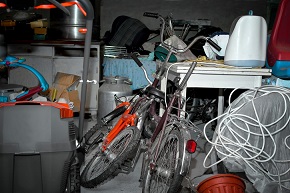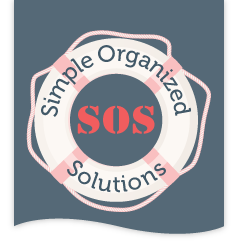 Basements are the foundations of our homes. They can be versatile in function. Most have infrastructure components such as a furnace, electrical panels and a water heater, that at some time or another will require repair or maintenance. Some are used as extended living spaces. Some are used for storage with an area for laundry, and others combine all these functions.
Basements are the foundations of our homes. They can be versatile in function. Most have infrastructure components such as a furnace, electrical panels and a water heater, that at some time or another will require repair or maintenance. Some are used as extended living spaces. Some are used for storage with an area for laundry, and others combine all these functions.
Keeping all the various functions of your basement organized, can be challenging, especially the storage areas. This article will focus on the storage areas. The types of items you have in the storage areas and how to store them so you can find what you need quickly and easily.
Basement storage areas can easily turn into a dumping ground for all kinds of items. Things that break and you fully intend to repair someday, but never get around to it. Things you receive from a loved one that passed away, holiday decorations, toys the kids have outgrown, tools, and various other items that you may or may not currently use.
So where do you begin? The first step is to get in the right frame of mind. Organizing your basement is probably not one of your favorite things to do, so you may be procrastinating. Make the decision that you WILL tackle this challenge if that’s your perception of this project. Work on it in small chunks. Start with an hour to see how much you get done. Sometimes when we get on a roll and feel a sense of accomplishment, it motivates us to continue. Keep in mind that you do not have to finish it in one day!
Gather some everyday items around your house to use as tools for your project. If you have empty boxes, they are great sorting tools. Use sticky notes and a marker for temporary labels. Trash bags are a necessity for this work, and you WILL find trash. If you recycle, you need another bag for those items. I recommend black bags for trash and white bags for recycle.
Organizing is a process. And like any process, there are steps to take to complete the process. Use the ‘PEACE’ acronym below, that I’ve used in previous posts, as a guide to create your clutter-free, organized basement.
Put like items together – into categories that make sense to you. If you don’t know where to begin, start with the first pile you see. Pickup an object and decide on a category. If you have some empty boxes or bins, put the object in a box and label a sticky note with the category and put it on the box. Piles will also work if you don’t have empty boxes, with a sticky note on the wall or floor. As you sort through your things, you will probably end up with empty boxes and bins that can be used as sorting tools now and storage containers later on. You will also find items that don’t belong in the basement, or belong to someone else, so make categories for those items. Refrain from using a ‘Miscellaneous’ category.
Eliminate excess – Take each item out of the pile or box and make a decision to keep or discard (trash, recycle, donate). Keepers go back in the pile or box, trash & recycle in the appropriate bag, and now you need a box or pile for donated, and maybe sell items. Write ‘keep’ on the sticky note after you have purged each category.
Assign homes – Look around the space that you have to store your things and assign them all a home. Use the categories you established when sorting to keep like items together. The home you assign for a category needs to have sufficient space for all of its items.
Containment – At this point you need to determine how to contain the keepers you plan to store. Shelves, boxes, bins, baskets, peg boards & hooks, rooms, and your whole house are considered containers. Look at your keepers and the various forms of containers you have to work with. If you have enough containers for your things, great, if not, now is the time to decide if you need to buy or build additional containers. Remember to label your containers. You can use a label maker or use a marker on sticky notes and tape them on the container or shelf.
Evaluate – As you acquire new items or your life situations change, you will need to look at the storage solutions you created to see if they still work for you. If not, you will need to tweak them to accommodate the new situation. It may be as easy as adding more shelves or discarding a category of items to make more space.


